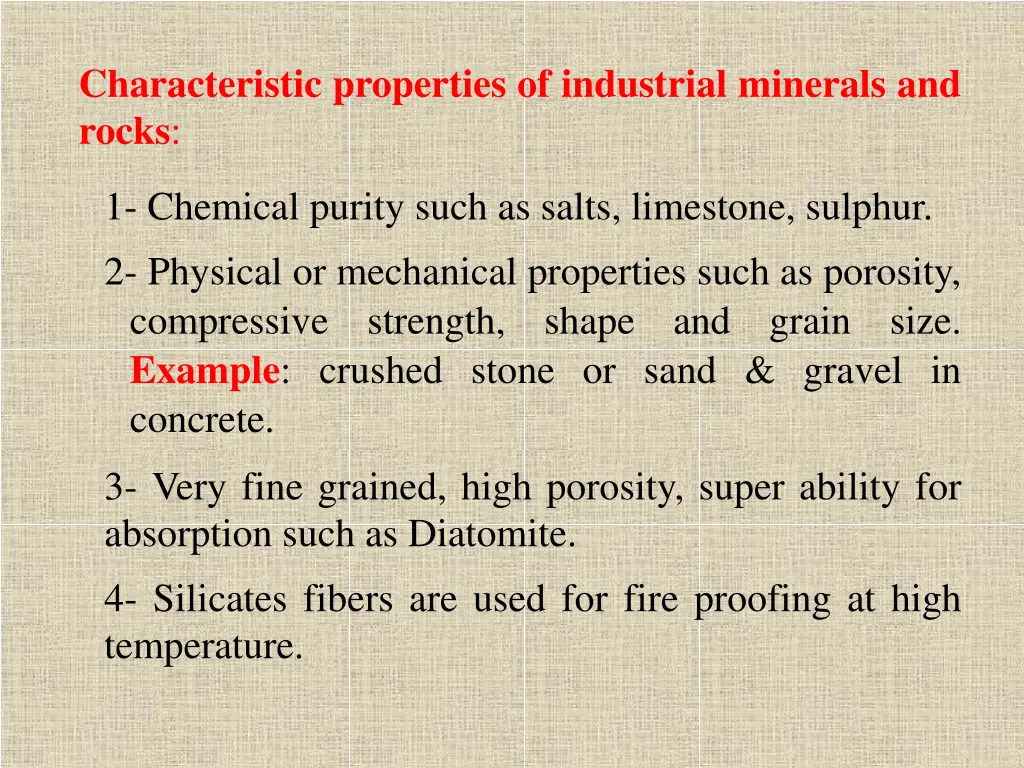
Industrial Minerals and Rocks: Properties, Classification, and Economic Aspects
Explore the properties, classification, and economic aspects of industrial minerals and rocks, including chemical purity, physical characteristics, economic value, and classification based on geological occurrences and uses. Learn about the essential role these materials play in various industries and their economic significance.
Download Presentation

Please find below an Image/Link to download the presentation.
The content on the website is provided AS IS for your information and personal use only. It may not be sold, licensed, or shared on other websites without obtaining consent from the author. If you encounter any issues during the download, it is possible that the publisher has removed the file from their server.
You are allowed to download the files provided on this website for personal or commercial use, subject to the condition that they are used lawfully. All files are the property of their respective owners.
The content on the website is provided AS IS for your information and personal use only. It may not be sold, licensed, or shared on other websites without obtaining consent from the author.
E N D
Presentation Transcript
Characteristic properties of industrial minerals and rocks: 1- Chemical purity such as salts, limestone, sulphur. 2- Physical or mechanical properties such as porosity, compressive strength, Example: crushed stone or sand & gravel in concrete. shape and grain size. 3- Very fine grained, high porosity, super ability for absorption such as Diatomite. 4- Silicates fibers are used for fire proofing at high temperature.
Economic aspects: Most of industrial minerals and rocks are plentiful which they occur in bulk like clays, sands, gravels, limestone, and shale. The processing necessary to convert the raw materials into a usable product is simple, like sand & gravels are easy to excavate and require washing to remove clays and screening to get right proportion.
The materials which are large in bulk are low unit value (low monetary value) and high place value. They are rarely imported or exported and produced by common geological processes. They are affected by economic fluctuations, production of materials has increased in response to a rising demand. The materials which are limited occurrences (low place value) and special properties are high unit value. They are exportable and importable, example is china clay (kaolin), marble, mica, asbestos, magnesite , barite , sulphur , diamond.
Classification of industrial minerals & rocks: Classifications of minerals and rocks is difficult because the diverse and applications. Classification based on: changing industrial 1- The nature of geological occurrences and origin. 2- The chemical properties. 3- The physical properties. 4- Economical properties. 5- Uses of materials.
One of the classifications is classification of Bates, 1969, according to economic aspects & some properties of industrial minerals and rocks: Aspect 1st group 2nd group 1- Bulky produced Large Small 2- Unit Value 3- Place Value 4- Imports & Exports Few Low High High Low Many 5- Distribution Distributed or wide Distribution Restricted 6- Geology Simple Complex 7- Processing Simple Complex 8- Examples Sand & Gravel, Crushed stone, Gypsum, Limestone Mica, Asbestos, Sulphur, Magnesite Mostly industrial rocks Mostly industrial minerals
